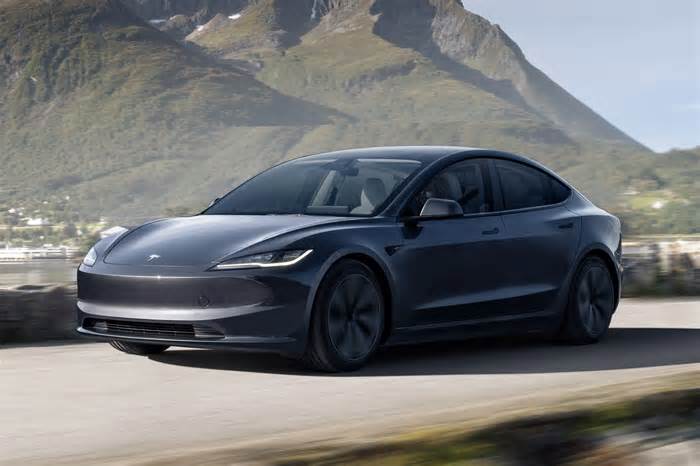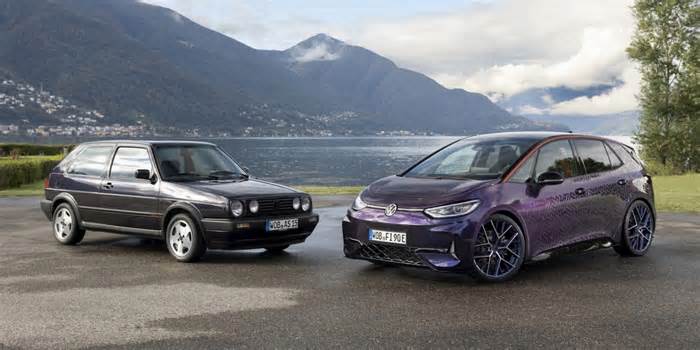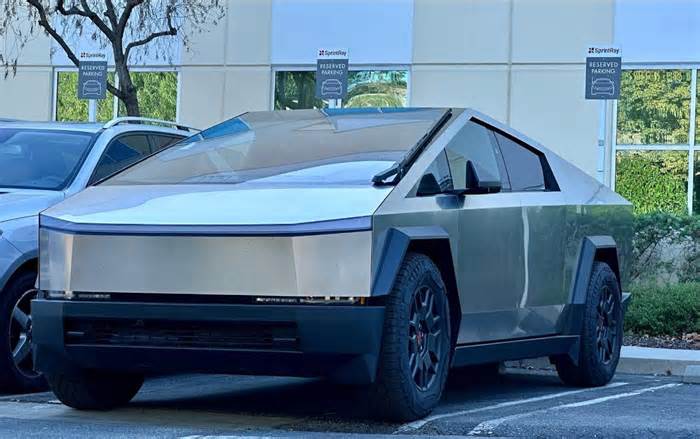
How long does it take to charge a Tesla?
- by Carsguide.com.au
- Nov 28, 2024
- 0 Comments
- 0 Likes Flag 0 Of 5

If you look at the question in a more detailed form - how long does it take to charge a Tesla Model 3, Tesla Model Y, Tesla Model S, Tesla Model X or even a Cybertruck, you can start to see the variables we’re dealing with here, because each Tesla has a different sized battery that requires different amounts of charge and delivers different amounts of range.
Then there is the question of charging equipment, because the variety of hardware Tesla offers directly impacts the rate and power of charging the car. The Wall Connector, Mobile Connector, Destination Charger and Supercharger are the four main types of hardware used for the Tesla charging experience.
And thus we begin to unpack the density of what seems a deceptively simple question - not unlike “why can’t I just screenshot an NFT?” or “Grandad, who did you vote for and why?”.
Let’s start with the most effective and most obviously titled form of Tesla charging, the Supercharger, which you’re only going to find out on the road because they use far too much power to be found in your driveway. A Tesla Supercharger uses 480 volts, which is part of the Level 3 (DC fast charging) charging category and it can deliver a maximum DC charging rate of 250kW.
2024 Tesla Model 3 Performance (Image: Tom White)
The power and range of the charge from a Supercharger depends significantly on the model. For the Tesla Model 3 and Tesla Model Y, the user is receiving approximately 286km of range for every 15 minutes of fast charging, while the more rarely seen Tesla Model X (no longer on sale in Australia) can take 260km of range in the same timeframe. The Tesla Model S can add as much as 320km in 15 minutes on a Supercharger.
If you were lucky enough to sneak a Tesla Cybertruck into the country without our safety officials noticing, you would find that it can add around 220km of range for every 15 minutes on a Supercharger, or slightly less than a Tesla Model 3.
In terms of how long it will take you for a full charge, again, that depends on the model. The Model 3 Long Range has the most driving range, offering 629km - so a bit more than 30 minutes on a Supercharger - while the Model Y Long Range provides 533km.
The Tesla with the least range is the Rear-Wheel Drive Model Y, which has 455km, compared to 513km in the Rear Wheel Drive Model 3.
Tesla Superchargers
Clearly, these Tesla Superchargers are impressively rapid, so how many are there in Australia? As of September 19, 2024, there are 88 Supercharging stations in Australia, with NSW hosting 34 of those to Victoria’s 26, Queensland’s 12, and Western Australia having just eight. The Australian Supercharger Location Map looks as evenly distributed as a similar map of our population distribution, which makes sense.
For those who prefer the convenience of charging at home - which is between 80 and 90 per cent of Australians (and a recent report also found that 80 per cent of EV buyers have solar panels) - the significantly more popular and Tesla-appointed “recommended home charging solution” is the Wall Connector, which provides up to 75km of range per hour of charging.
Most homes in Australia have single phase power, which provides 7.0kW of power for charging, while some newer and larger homes have three phase, which allows them to charge at up to 22kW.
Even with three-phase power, however, it’s more realistic that you would be able to charge at 11kW, which is rate that Tesla quotes for its Wall Connector charging claims. At 11kW, the Wall Connector provides 54km of range every hour for the Tesla Model X, 60km for the Model S, or 75km per hour for the Model 3 and the Model Y.
2023 Tesla Model 3 (Image: Tom White)
By dividing the range per hour by the maximum range, your average Tesla would take takes anywhere from six to 15 hours to fully charge itself - or, to use a more simple definition, charging can be easily completed by plugging your Tesla in overnight.
If your home has single phase and your Wall Connector is only pulling 7.0kW, you need to reduce the amount of range being added by 30 per cent, or add 30 per cent to the charging times.
There is, of course, a worst case scenario, which is that you don’t have a Wall Connector at your home, or you’re at someone else’s house who doesn’t have one. This means you’ll have to plug your Tesla into a normal power point, using the Mobile Connector, and the bad news there is that you’ll only be achieving 2.0kW of charging, which is slower than watching Dances With Wolves at half speed.
If you do some simple maths, you’ll see that this is going to be roughly 20 per cent as fast as an 11kW system, which means adding about 15km every hour for a Tesla Model 3 or Model Y, which means charging a Long Range variant could take more than 40 hours.
2023 Tesla Model Y Performance (Image: Tom White)
The Mobile Connector, then, is a bit of an emergency charging option, or one for people who simply can’t have a Wall Connector at their homes.
Those people are more likely to be making a trip to a Supercharger regularly, of course, or to the final kind of Tesla charger - the Destination Charger.
These chargers, as the name suggests, are sprinkled around Australia at the sort of places a lot of people tend to drive to - or Destinations. Quite often these are found at hotels or restaurants or places of interest. As of February 2024, there were 668 Tesla Destination Charging locations around Australia and more than 40,000 worldwide.
A Destination Charger is basically a Wall Connector attached to someone else’s property, and Tesla claims they will deliver 11.5kW of charging speeds, so you can see above for what kind of charging times, and kilometres of range, that will deliver.
2024 Tesla Model 3 (Image: Tom White)
A Destination Charger is a great way to top up your battery pack while you’re eating a meal at a restaurant, for example, but it’s unlikely you’d do a full recharge at one.
There is, of course, an entire world of non-Tesla branded charging stations that you can also use as a Tesla owner, but the charging speeds at those vary too greatly for us to cover them all here.
It's worth checking out the websites of companies like Chargefox, Evie and the NRMA Electric Vehicle Fast Charger Network for more information on those.
In terms of on-the-road fast charging, Tesla is working on a V4 Supercharger with peak energy DC rates of 350kW, a significant jump and one that could see Tesla owners adding significant amounts of range in as little as 10 minutes.
With a Tesla, as with all electric vehicles, battery pack care is of the utmost importance, and extended periods with the battery at 20 per cent capacity or below are strongly advised against because this is not good for the health of your Tesla’s battery.
Related cars for sale on CarsGuide
::price::
Please first to comment
Related Post
Stay Connected
Tweets by elonmuskTo get the latest tweets please make sure you are logged in on X on this browser.
Sponsored
Popular Post
Middle-Aged Dentist Bought a Tesla Cybertruck, Now He Gets All the Attention He Wanted
32 ViewsNov 23 ,2024
Tesla: Buy This Dip, Energy Growth And Margin Recovery Are Vastly Underappreciated
28 ViewsJul 29 ,2024






 Energy
Energy



















